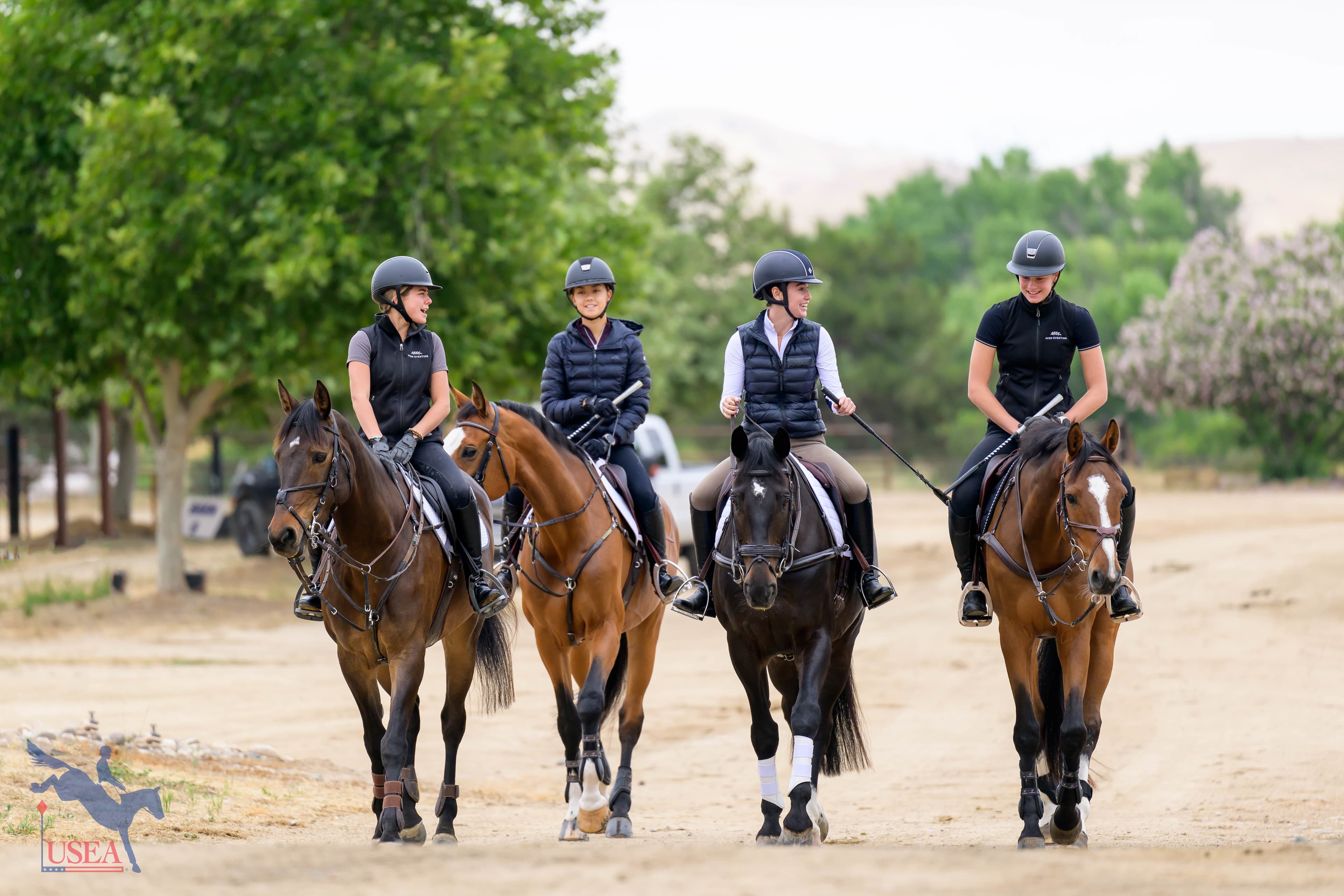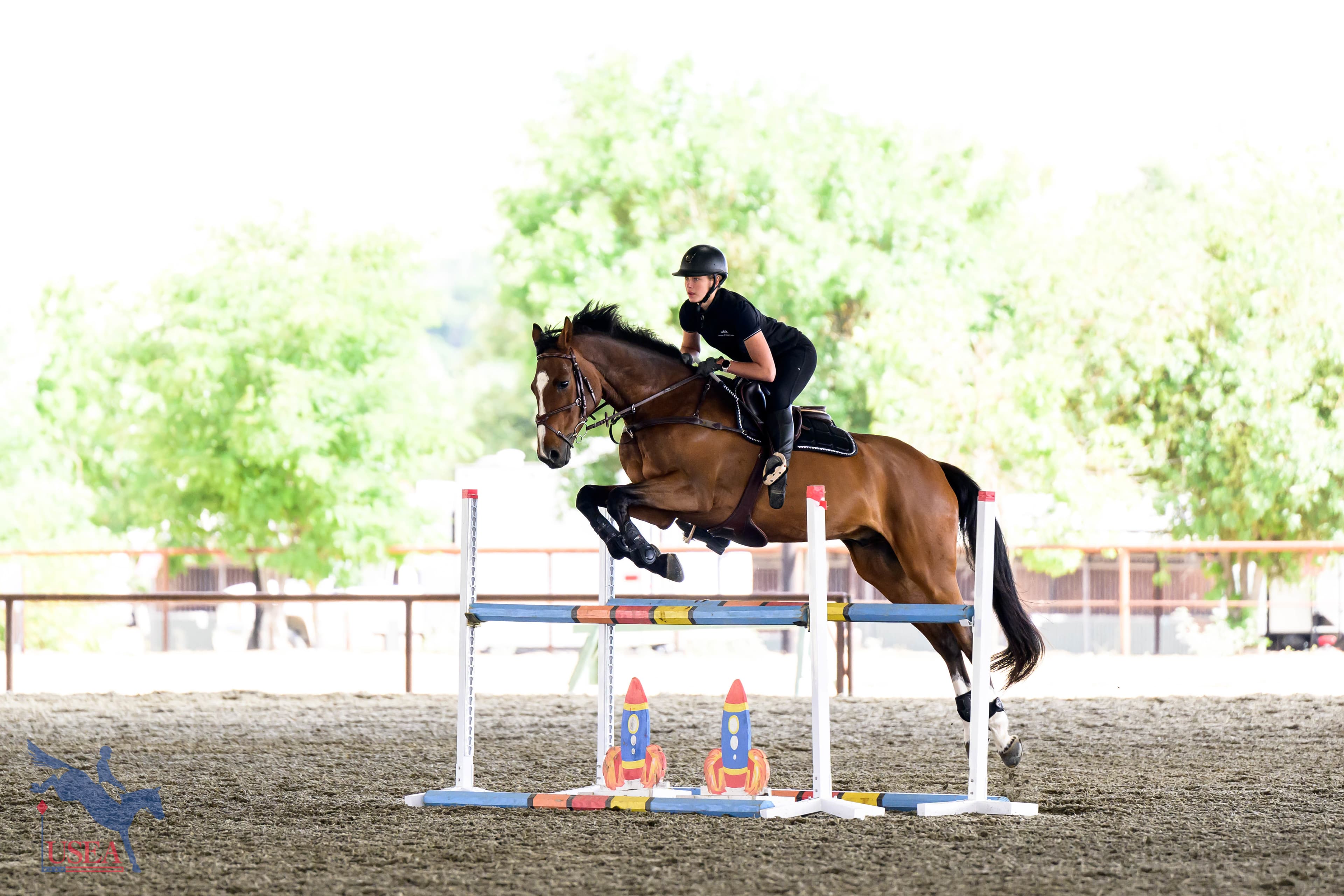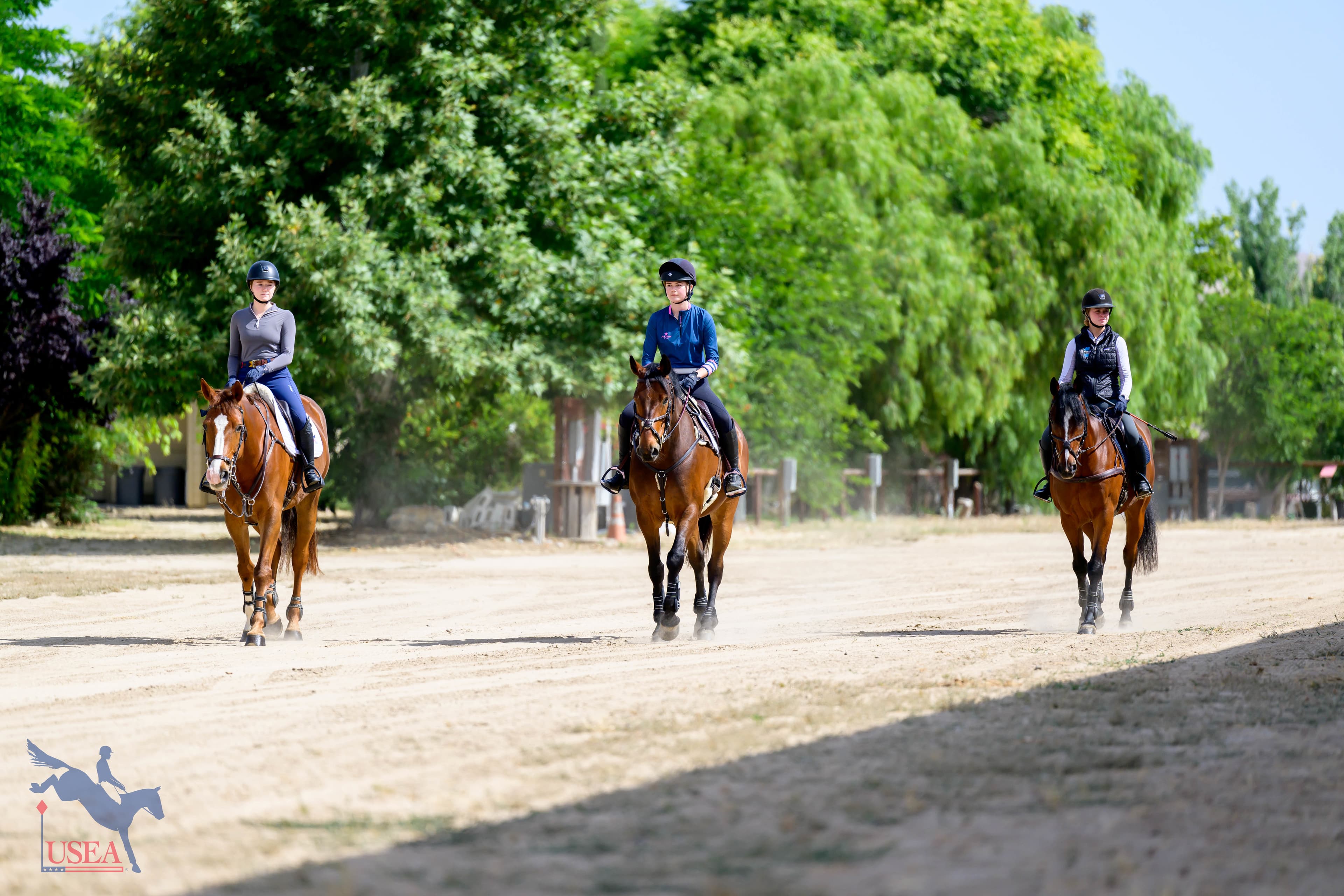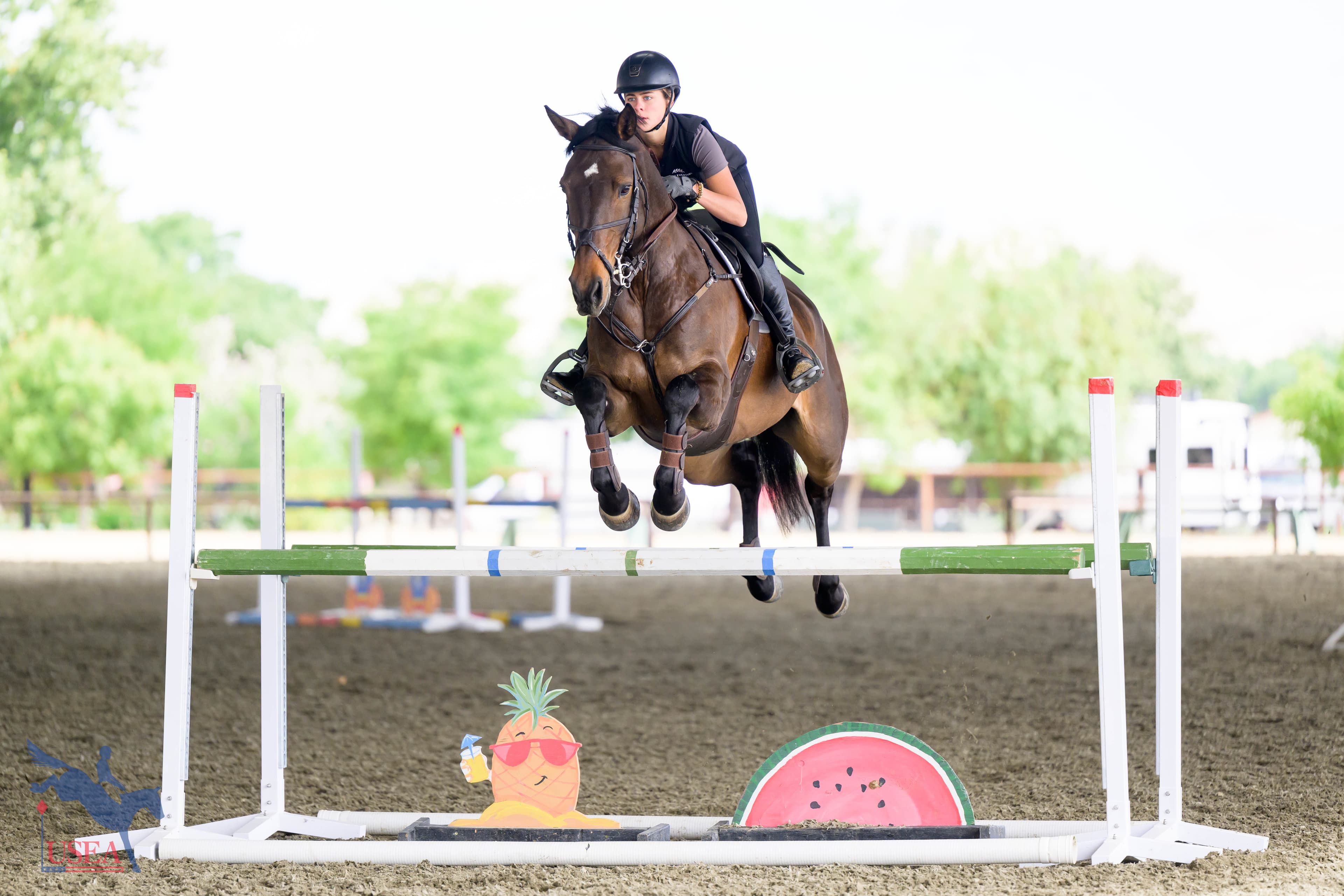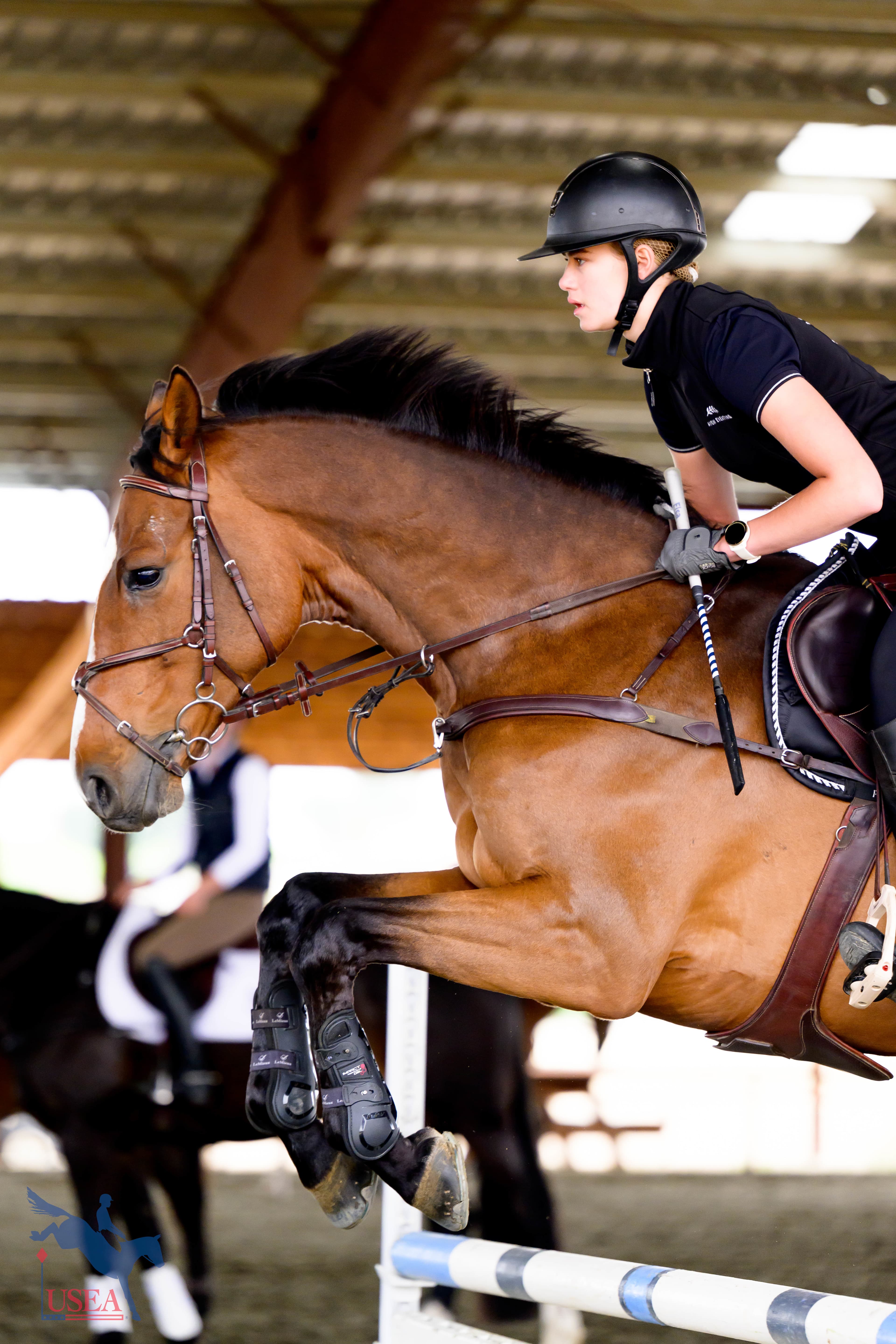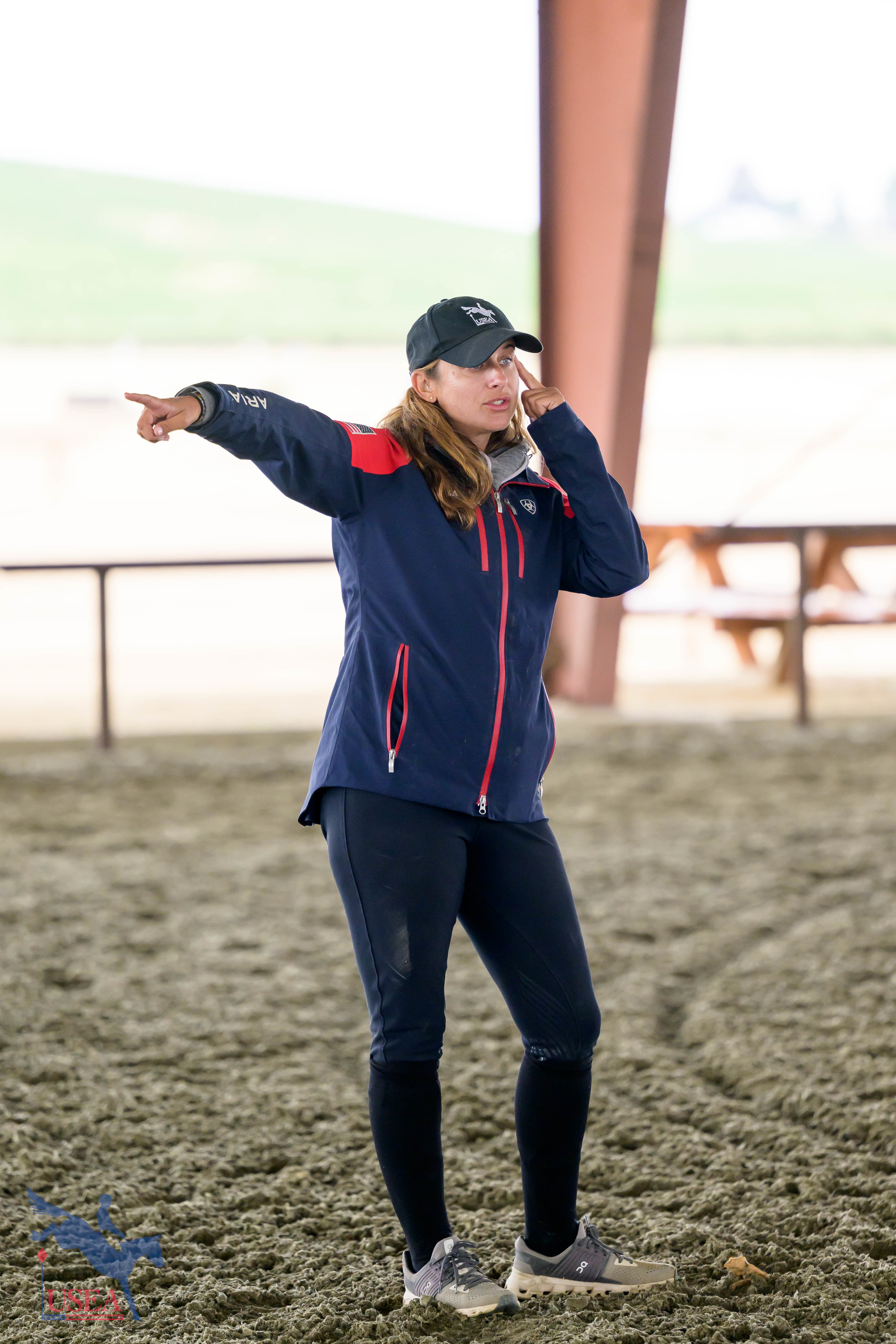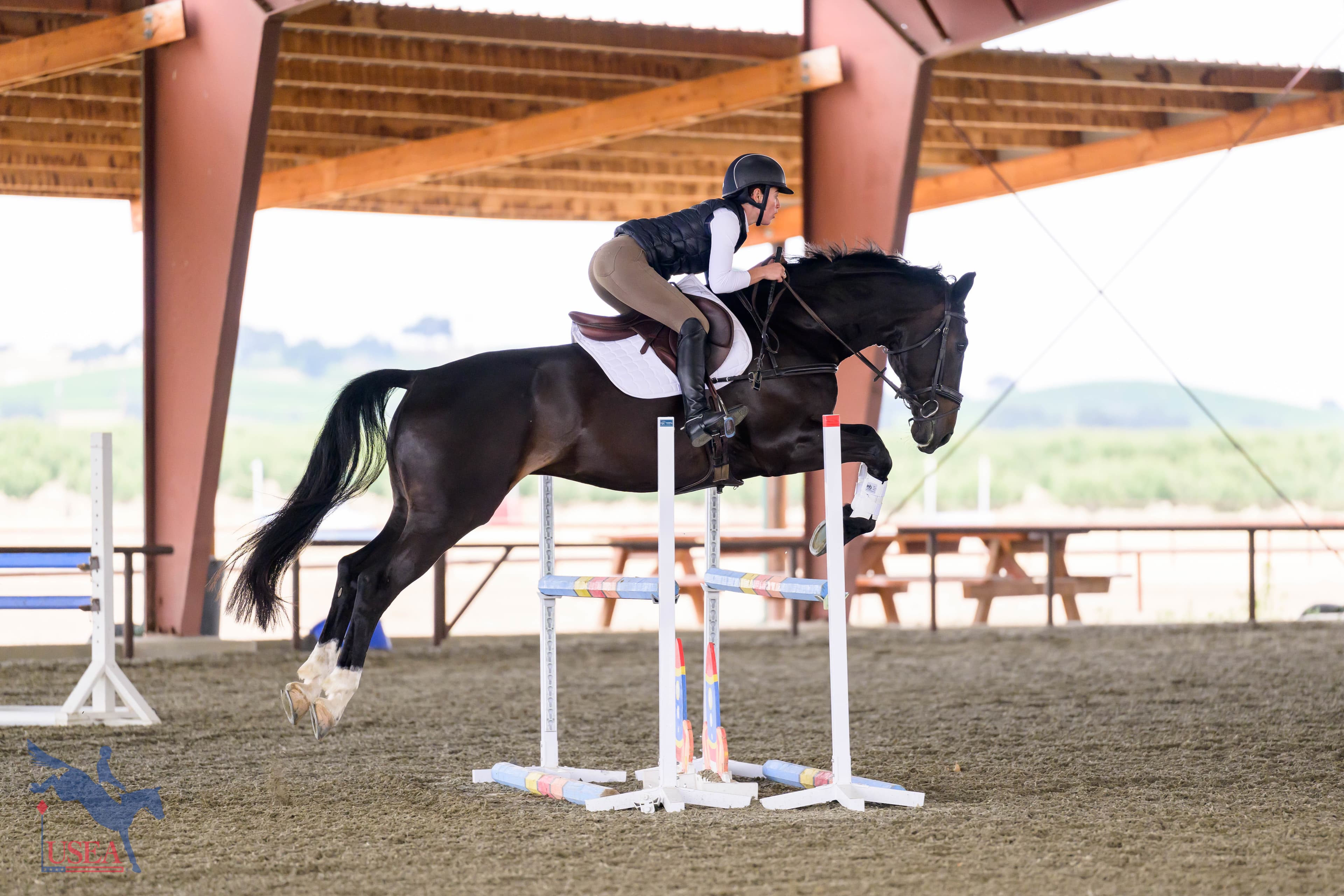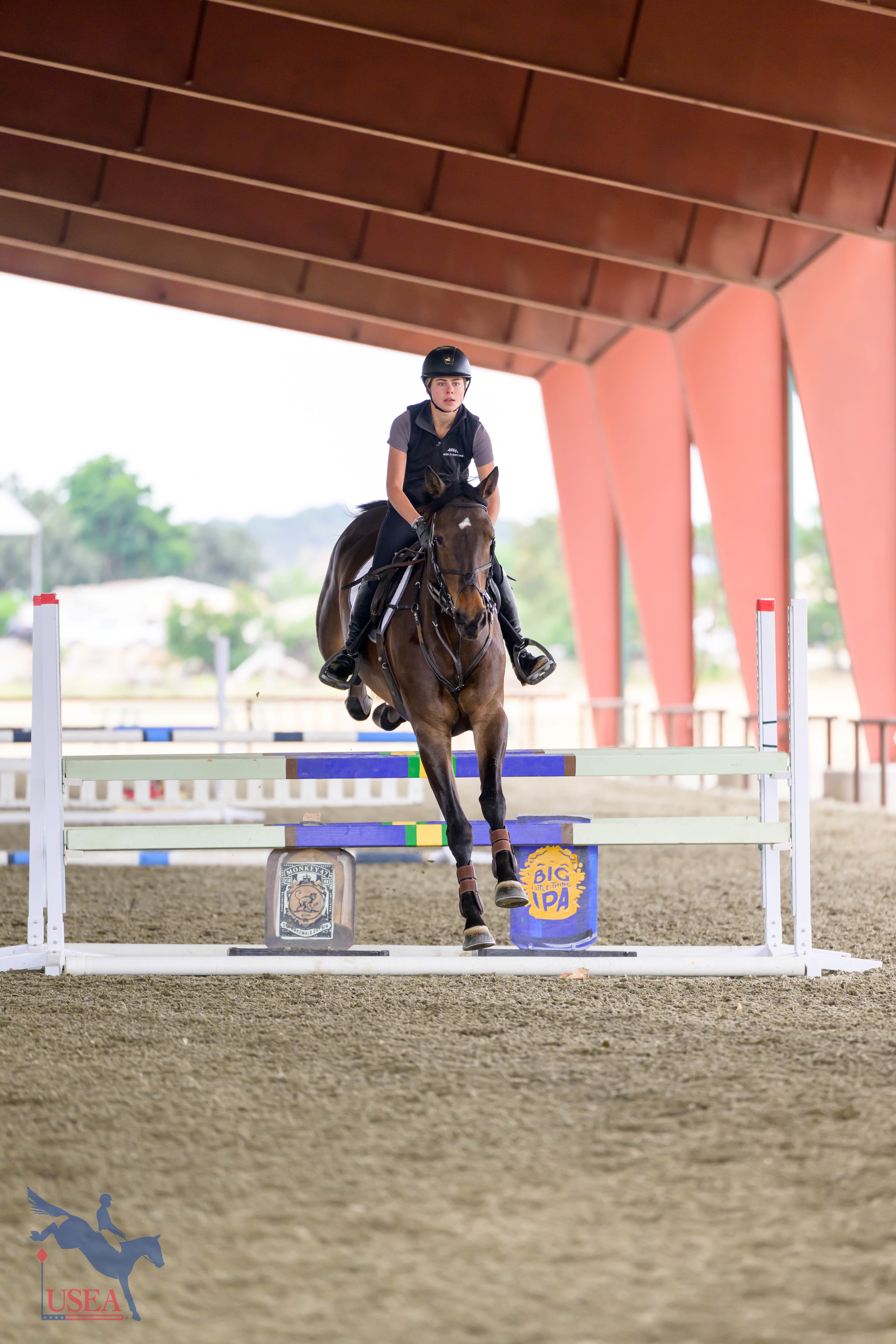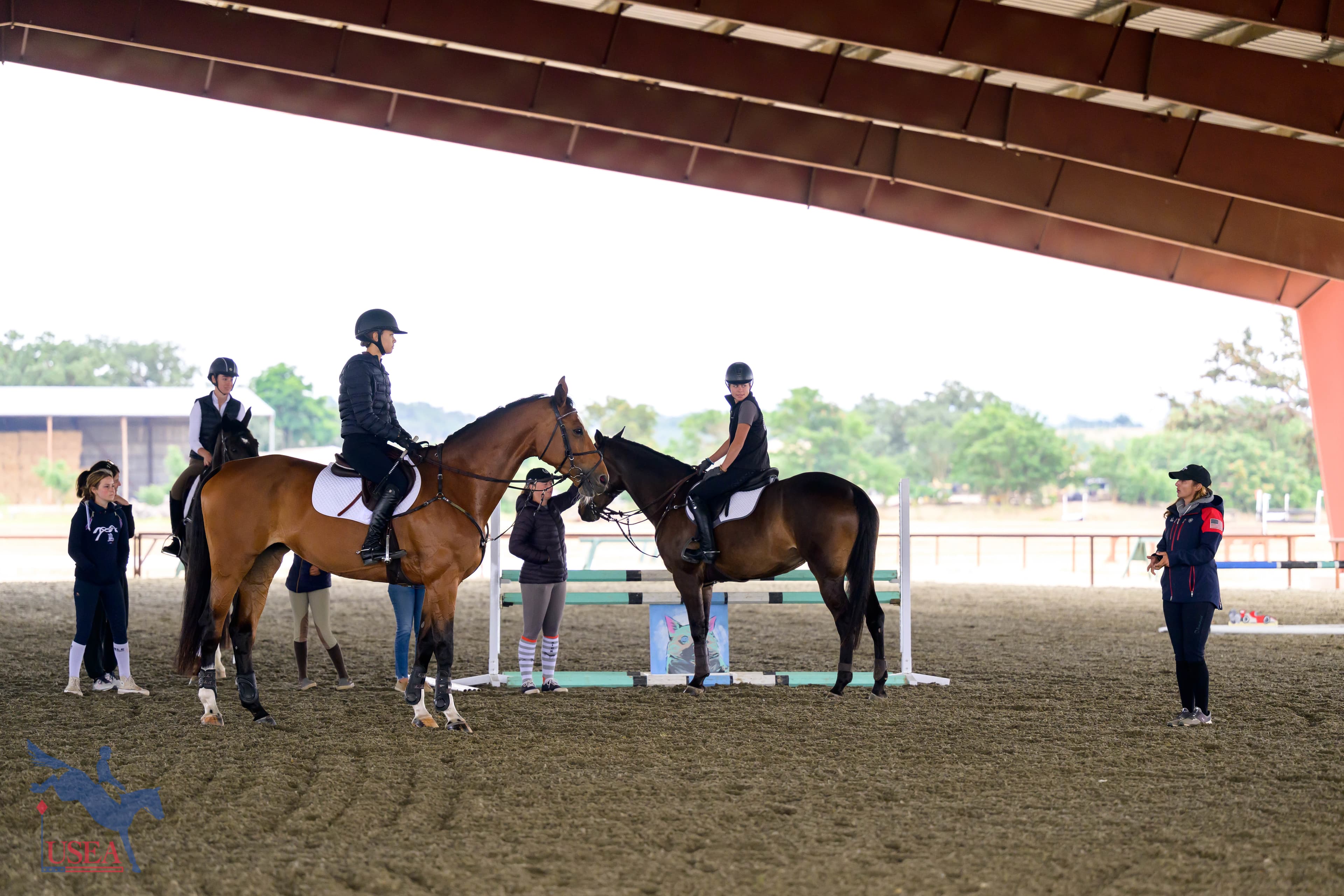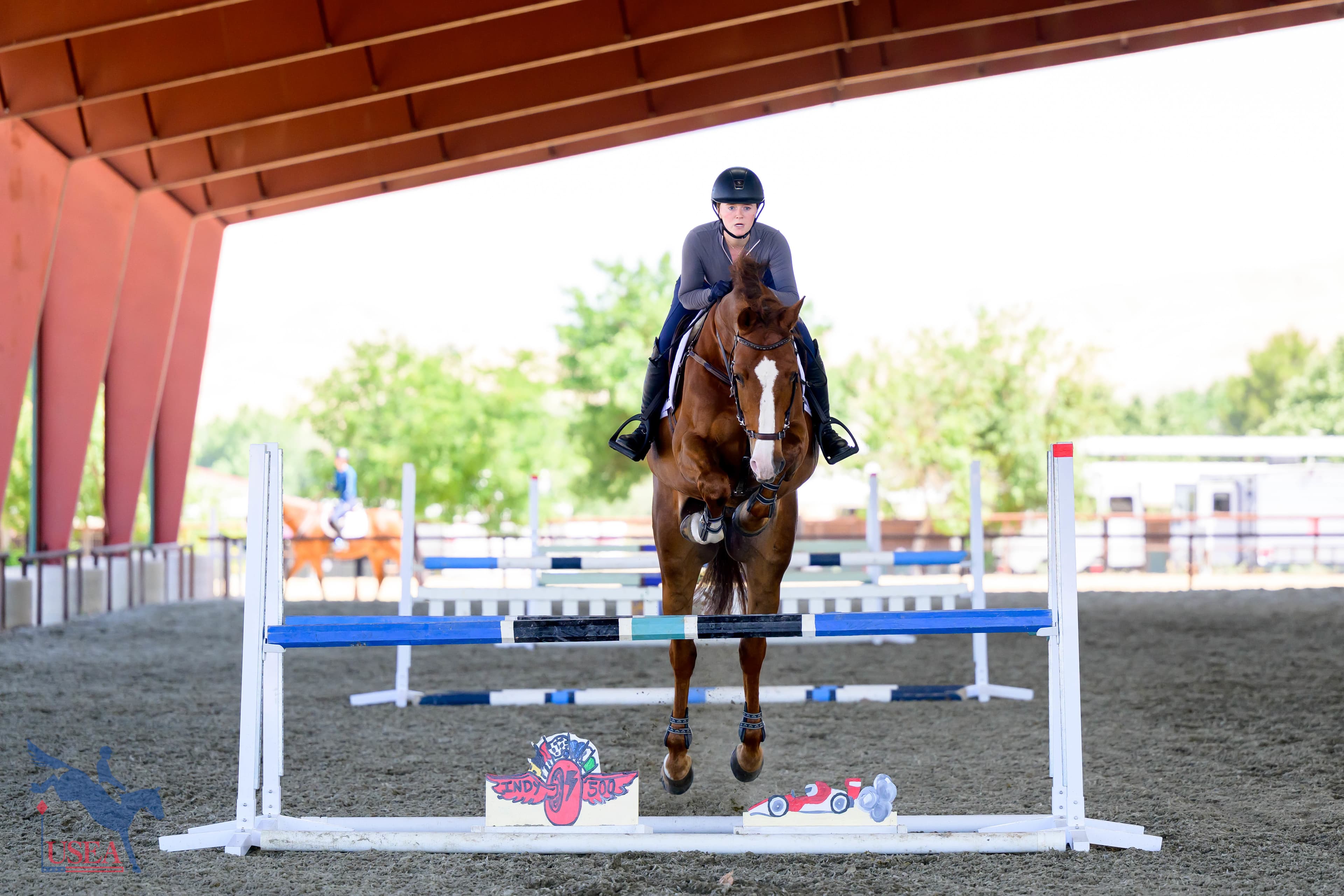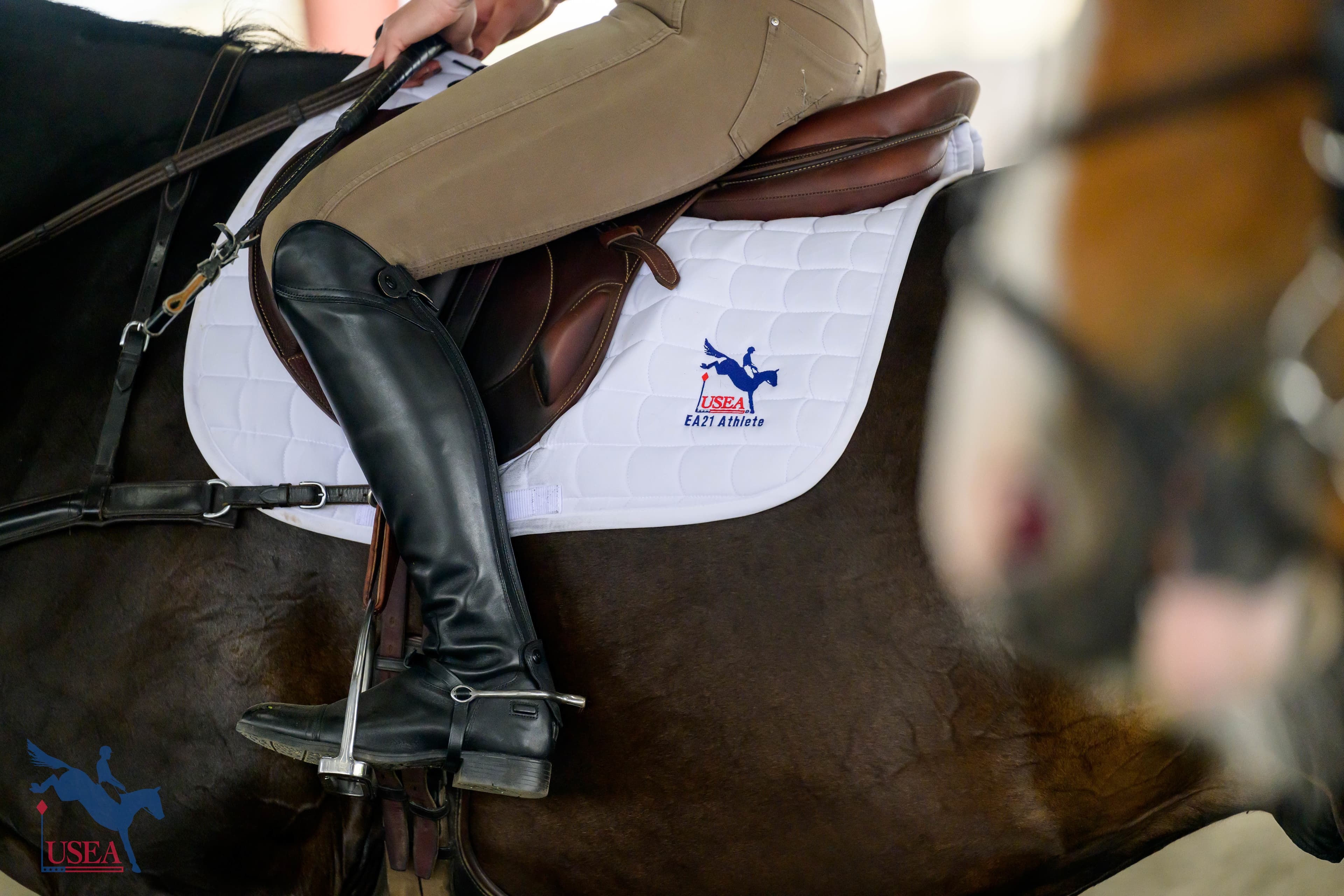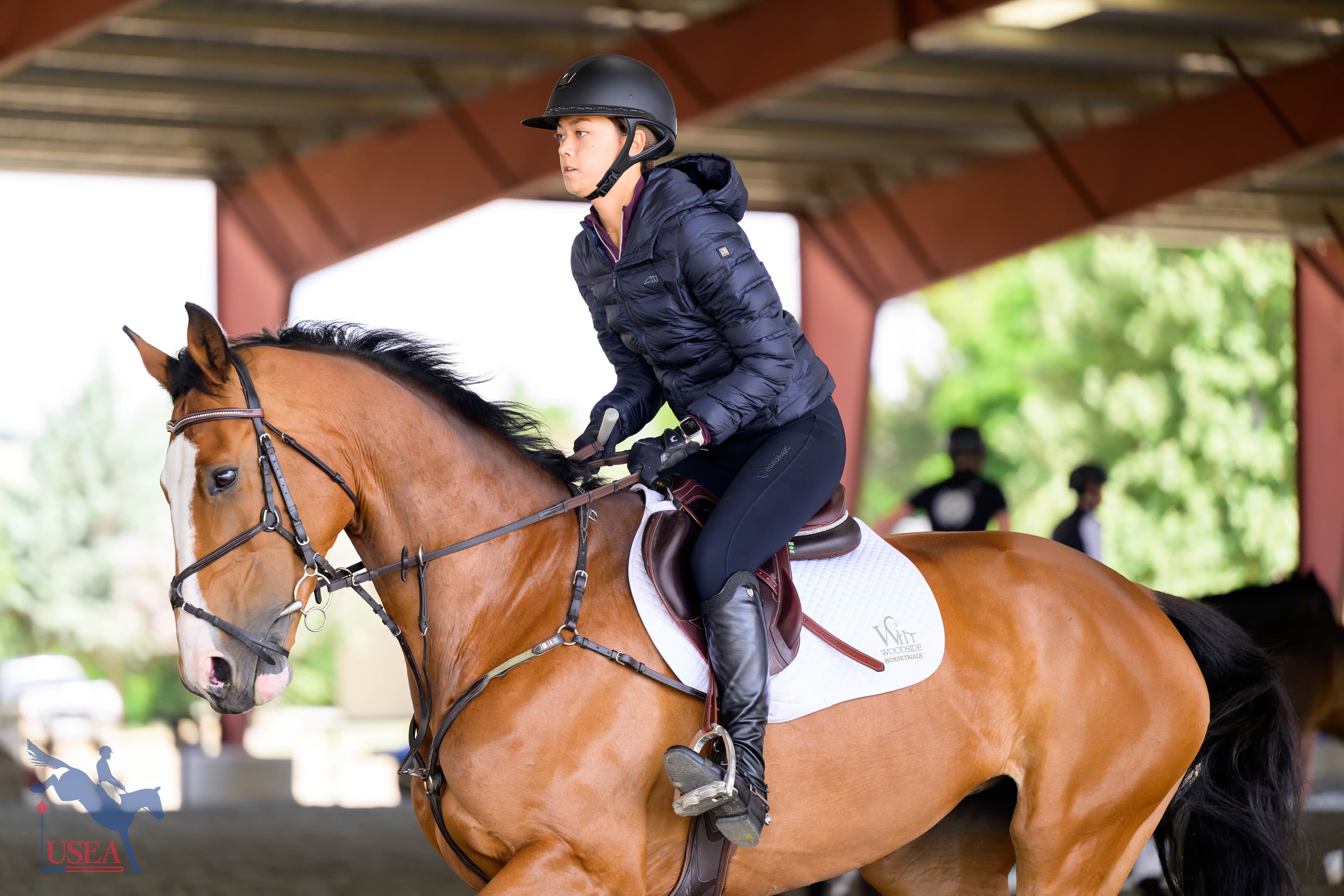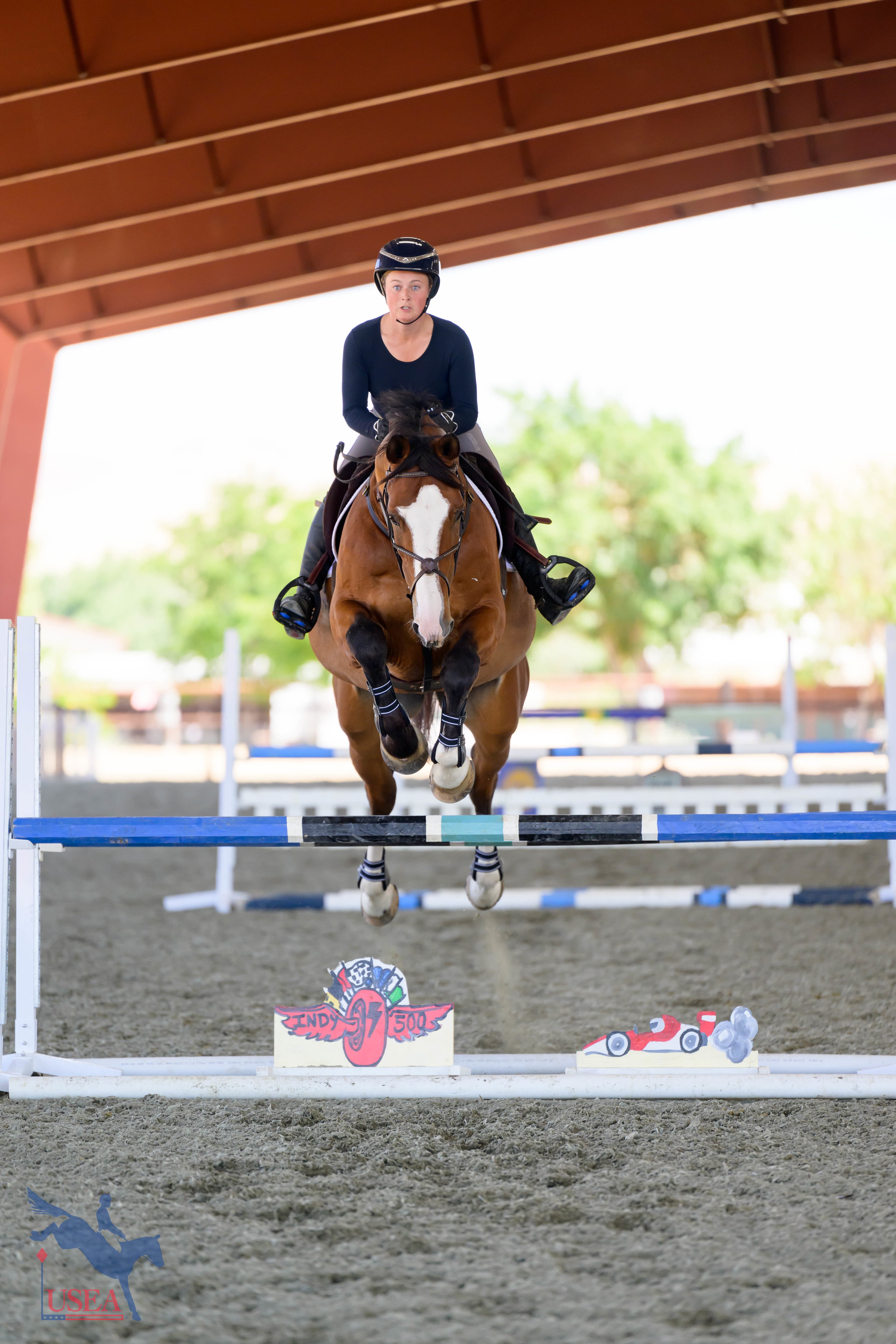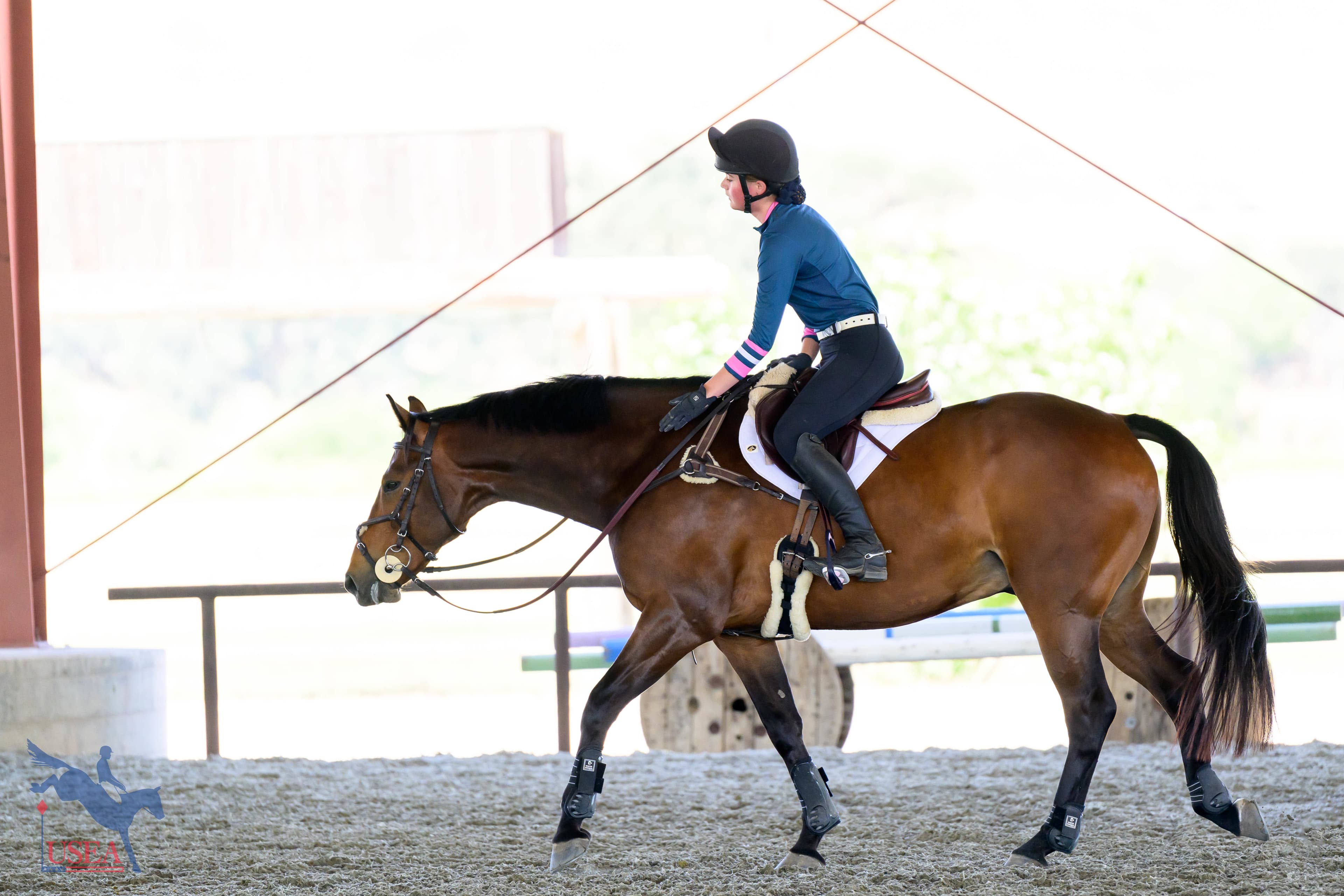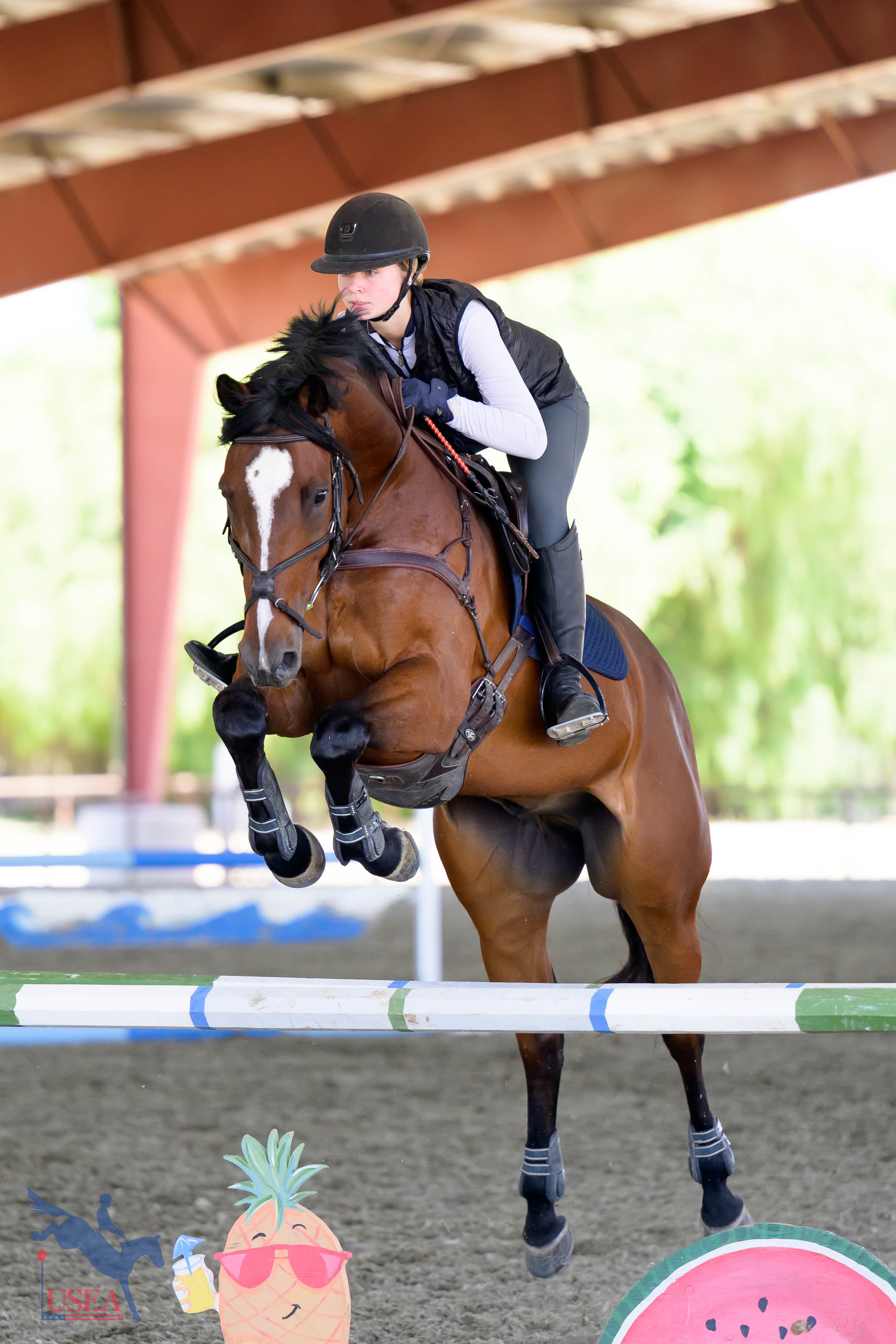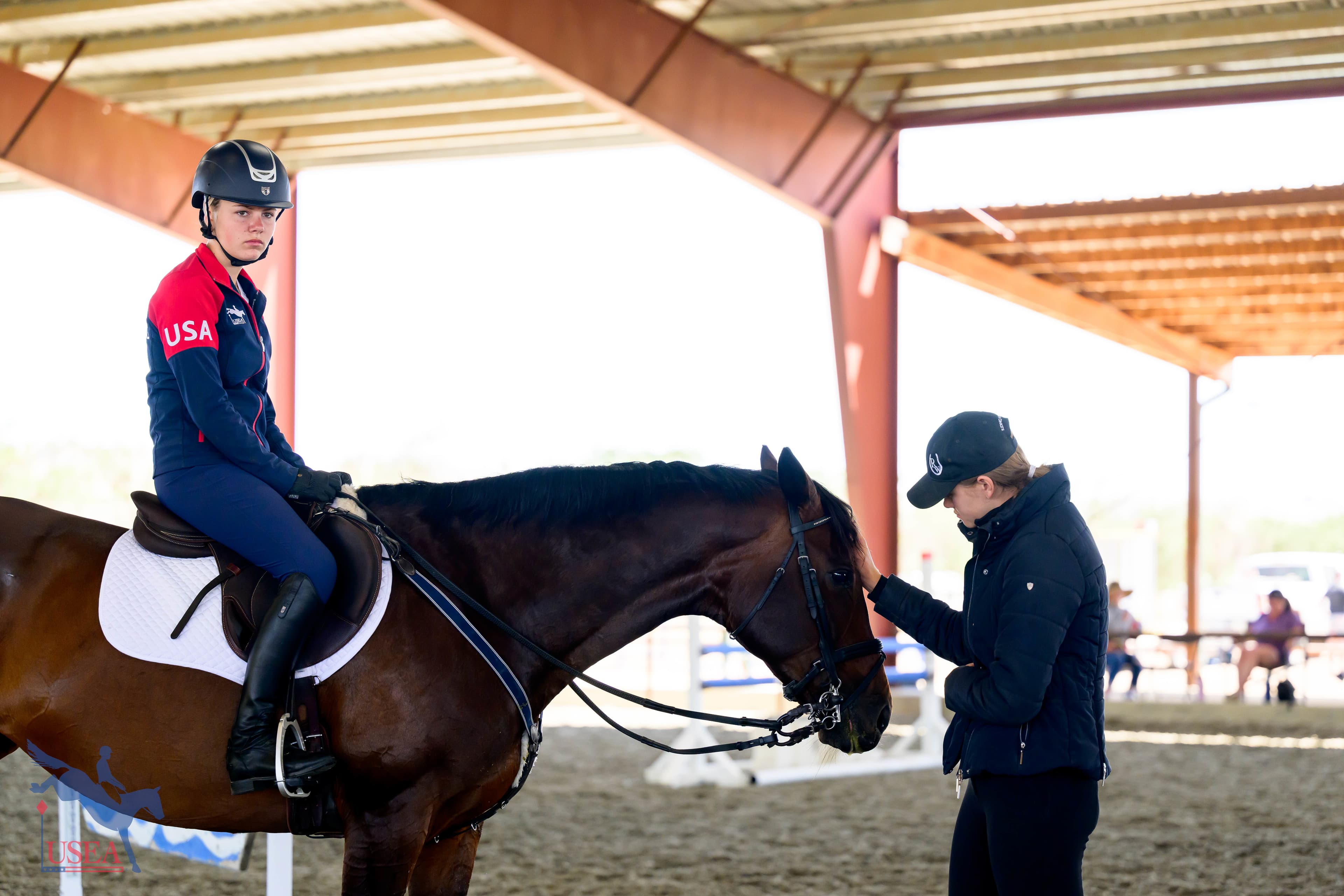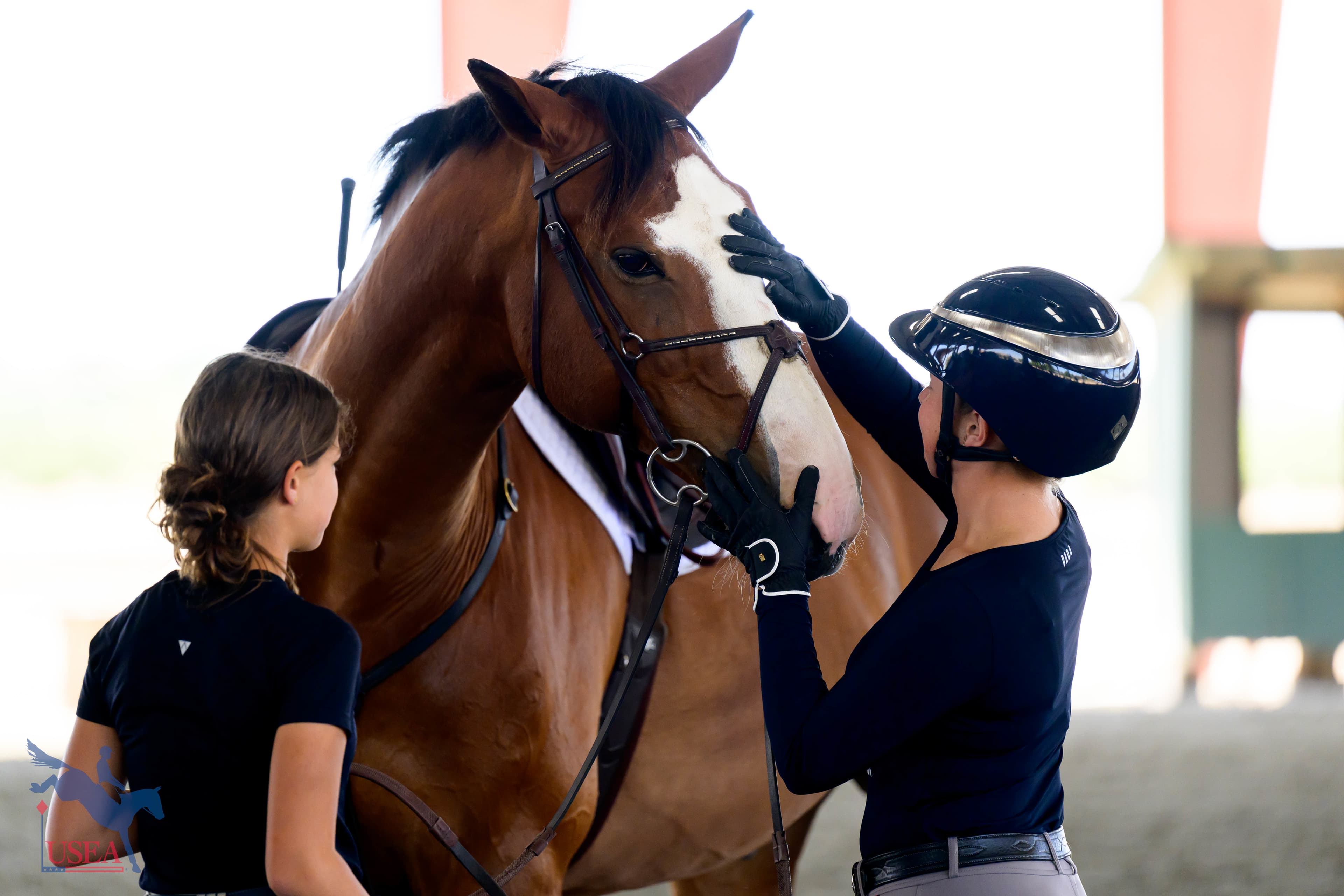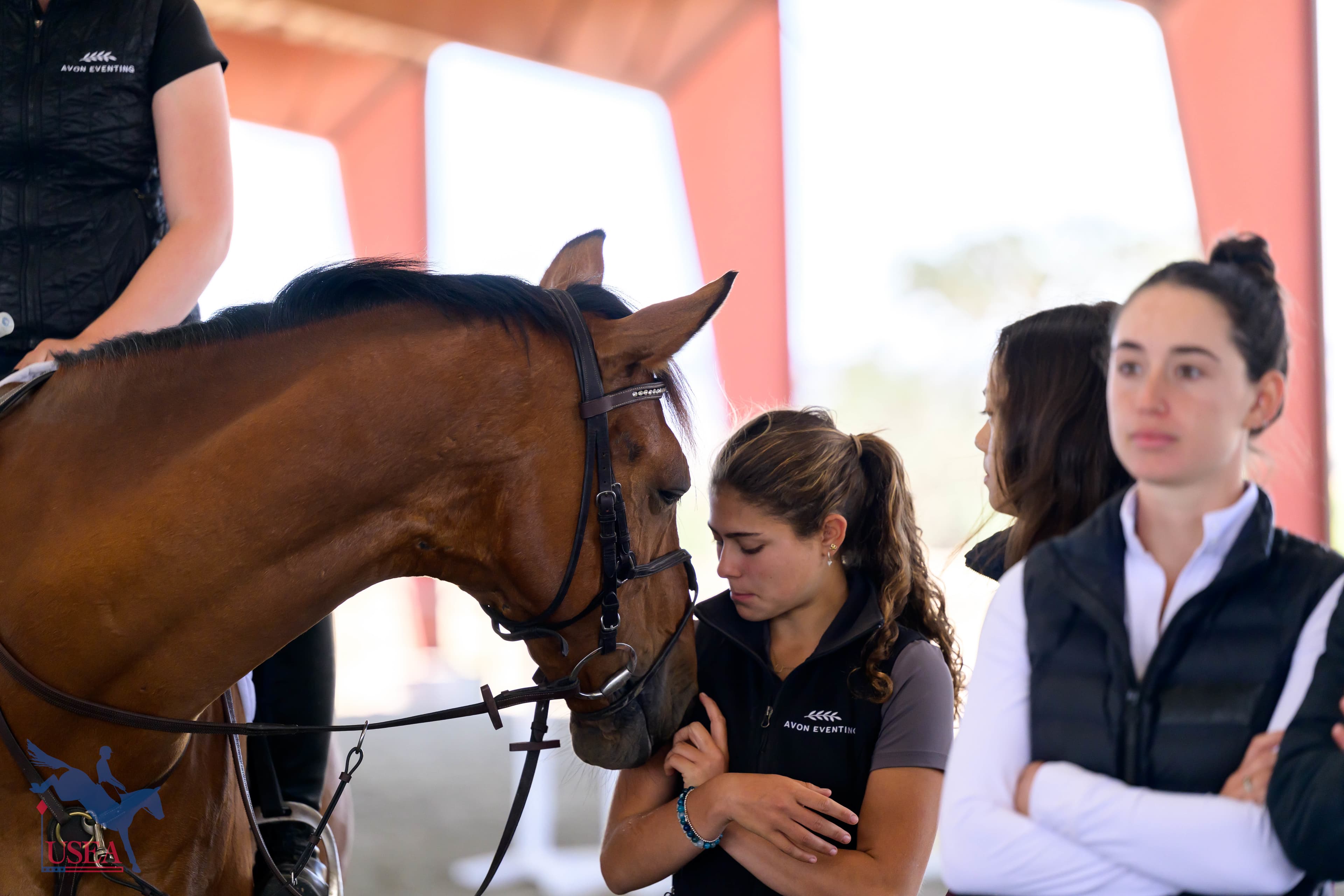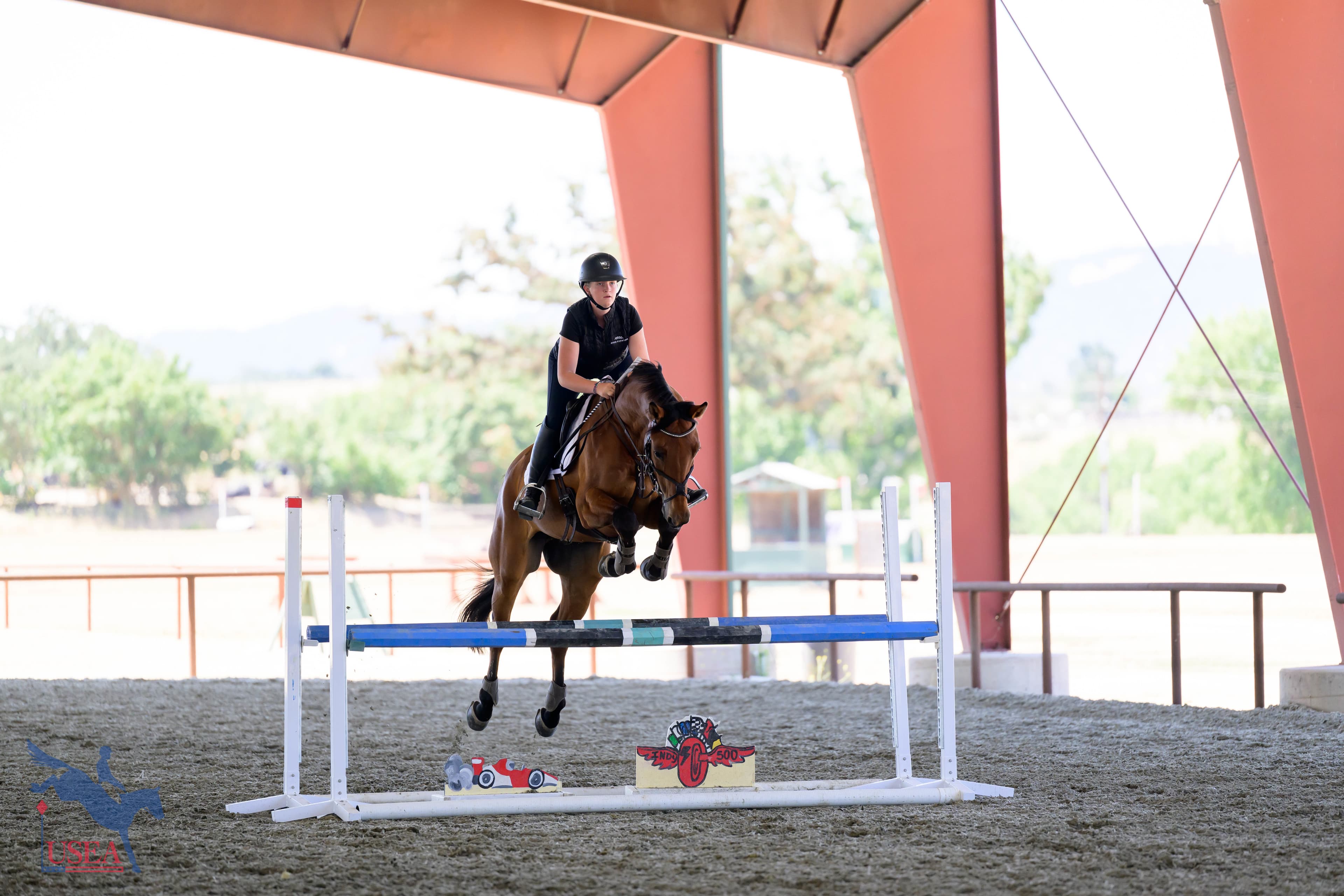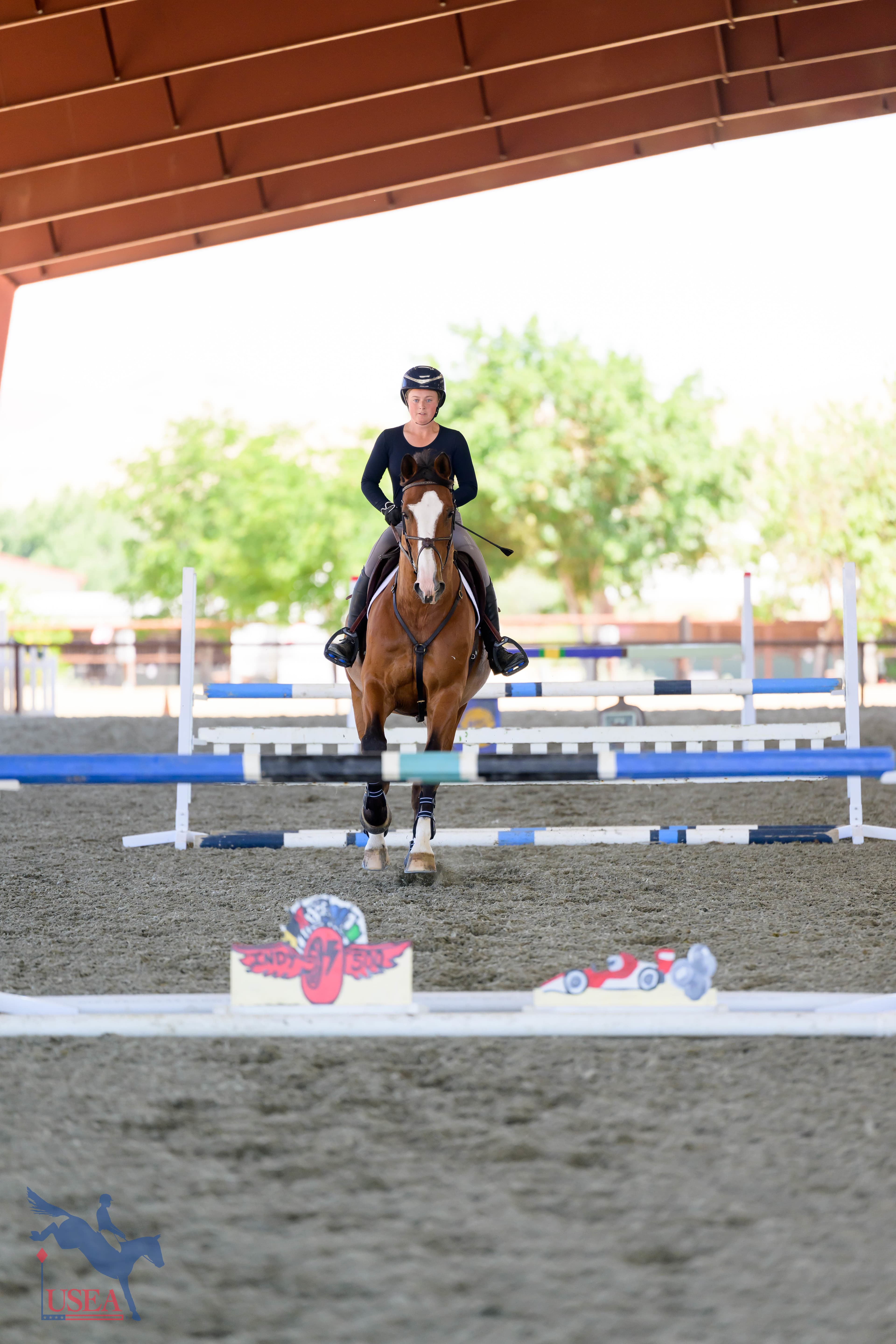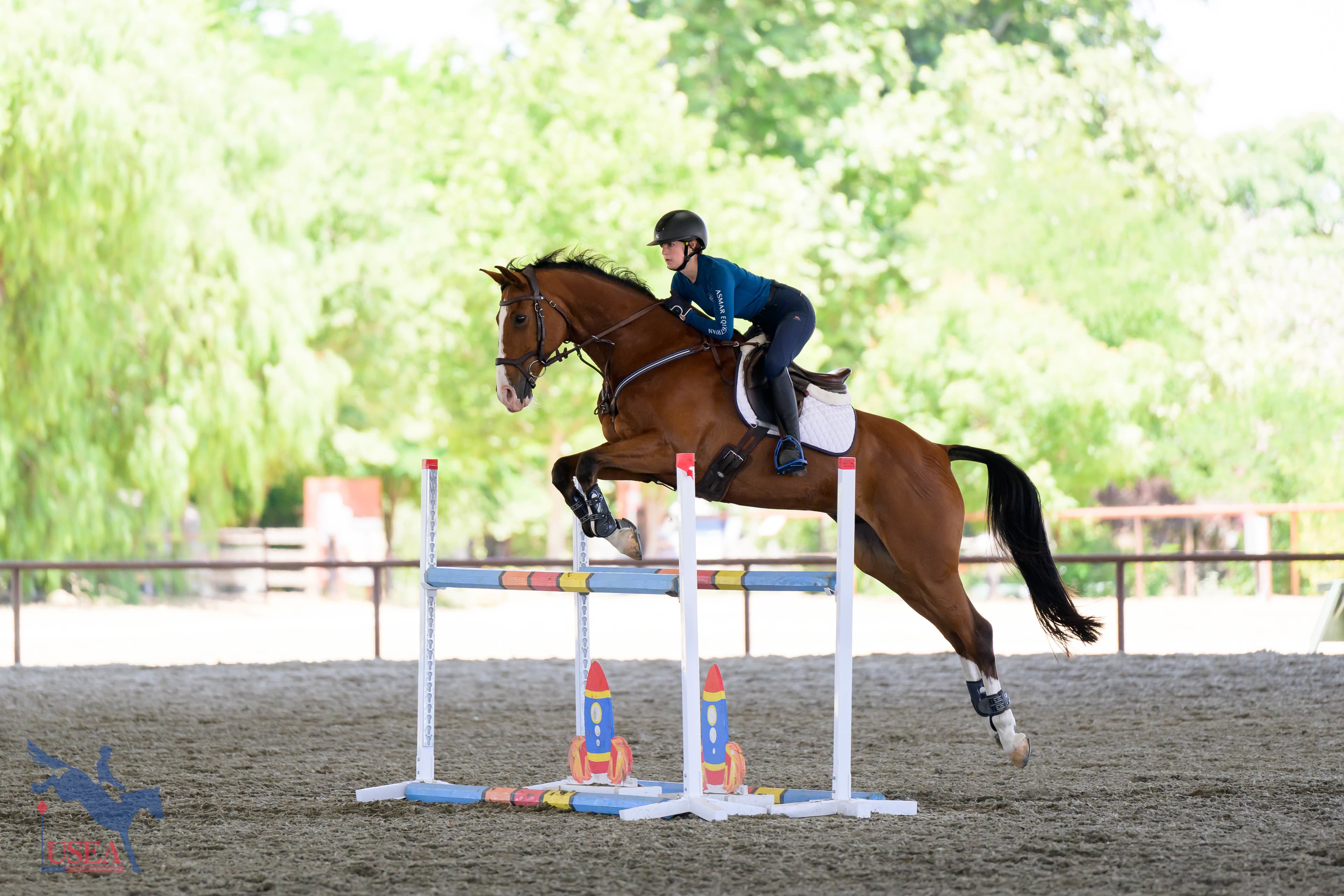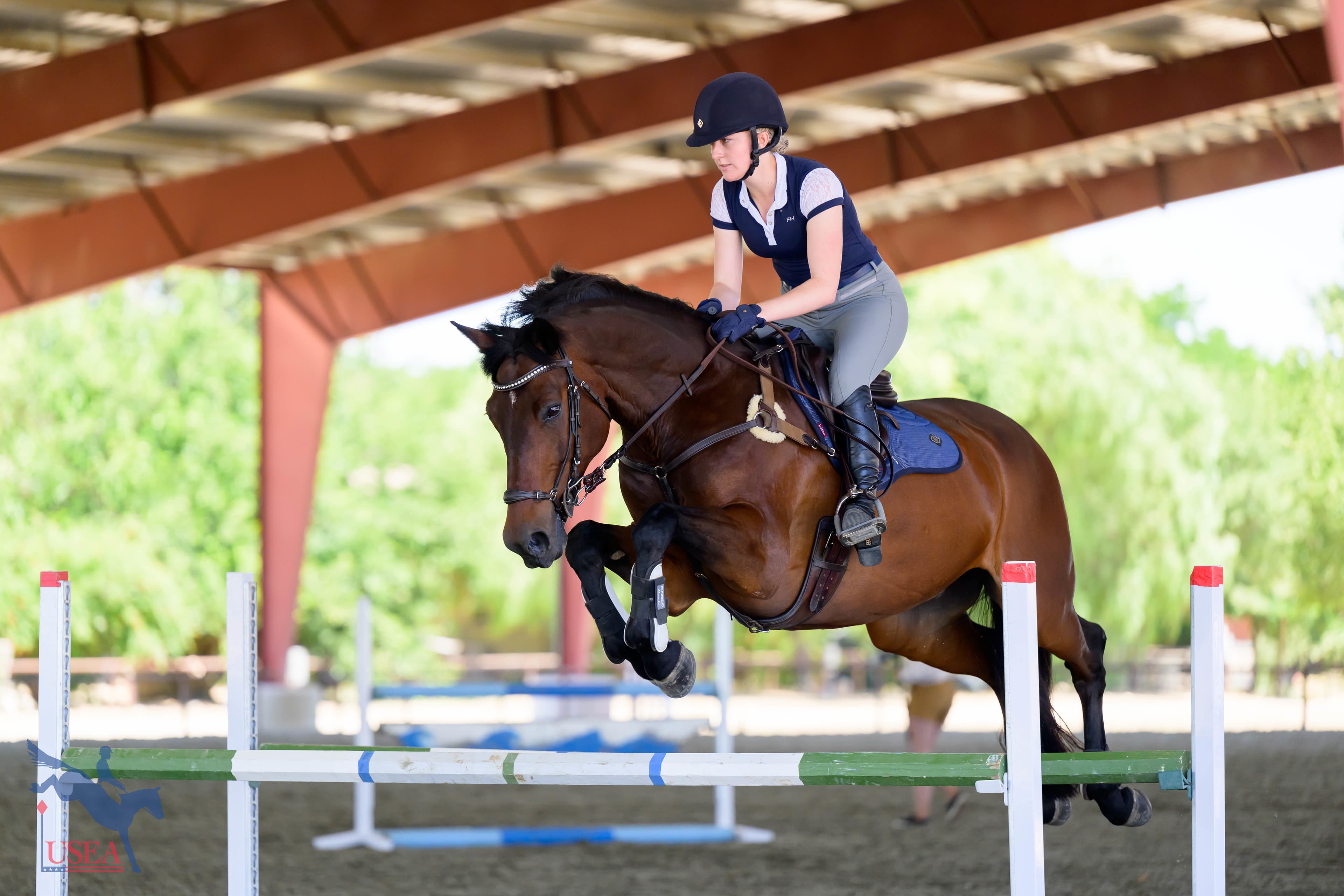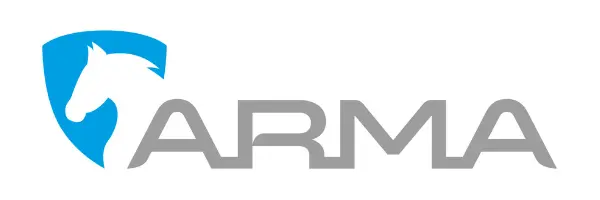Dressage With Speed Bumps on Day 2 of EA21 West I Regional Clinic
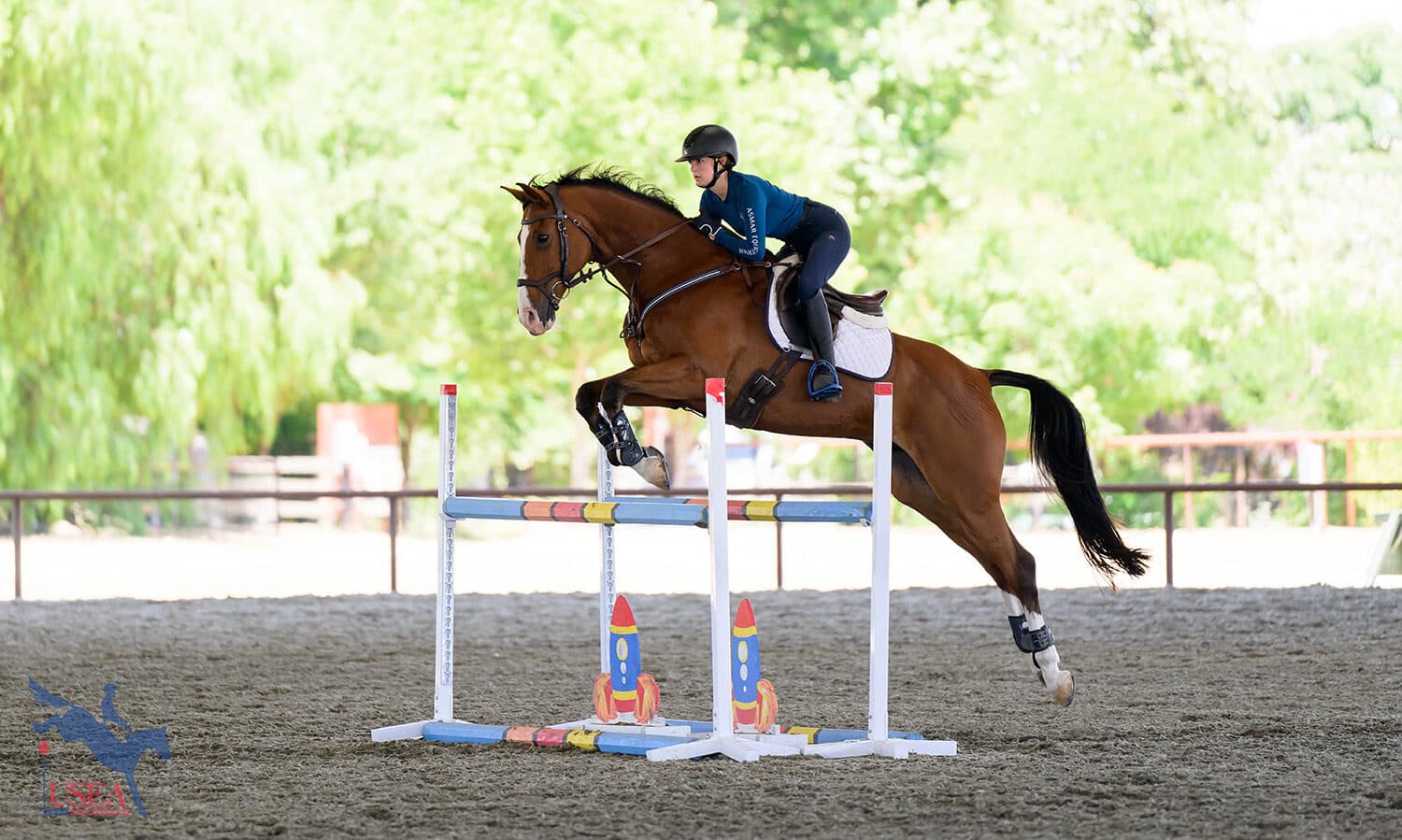
Another chilly morning at the USEA Emerging Athlete U21 (EA21) West I Regional Clinic at Twin Rivers Ranch and another lecture, this time focused on show jumping and cross-country riding.
West Coast EA21 coach Rebecca Brown reminded riders that the German training scale that was so the focus of the previous day’s work would remain the focus today. “Show jumping is dressage with speed bumps in the way,” she remarked and emphasized the extreme importance of rhythm. Maintaining the proper balance with good pace and lines would put riders in far better stead for smooth and efficient rides in both jumping phases.
Like the previous day, Brown made sure to cover the role of the rider’s position and to break down the various types used in jumping. In the United States, the history of Thoroughbred riding lent itself to a more forward and lighter position with an emphasis on a lighter balance whereas historically European riders rode heavier warmbloods which lent itself to a deeper seat. “Where you are in the tack is very dependent on your horse,” she added as a caveat. Being in the right balance for your horse and allowing more leg aid rather than seat aid is the important goal of an appropriate seat whether you are in stadium or riding across the country.
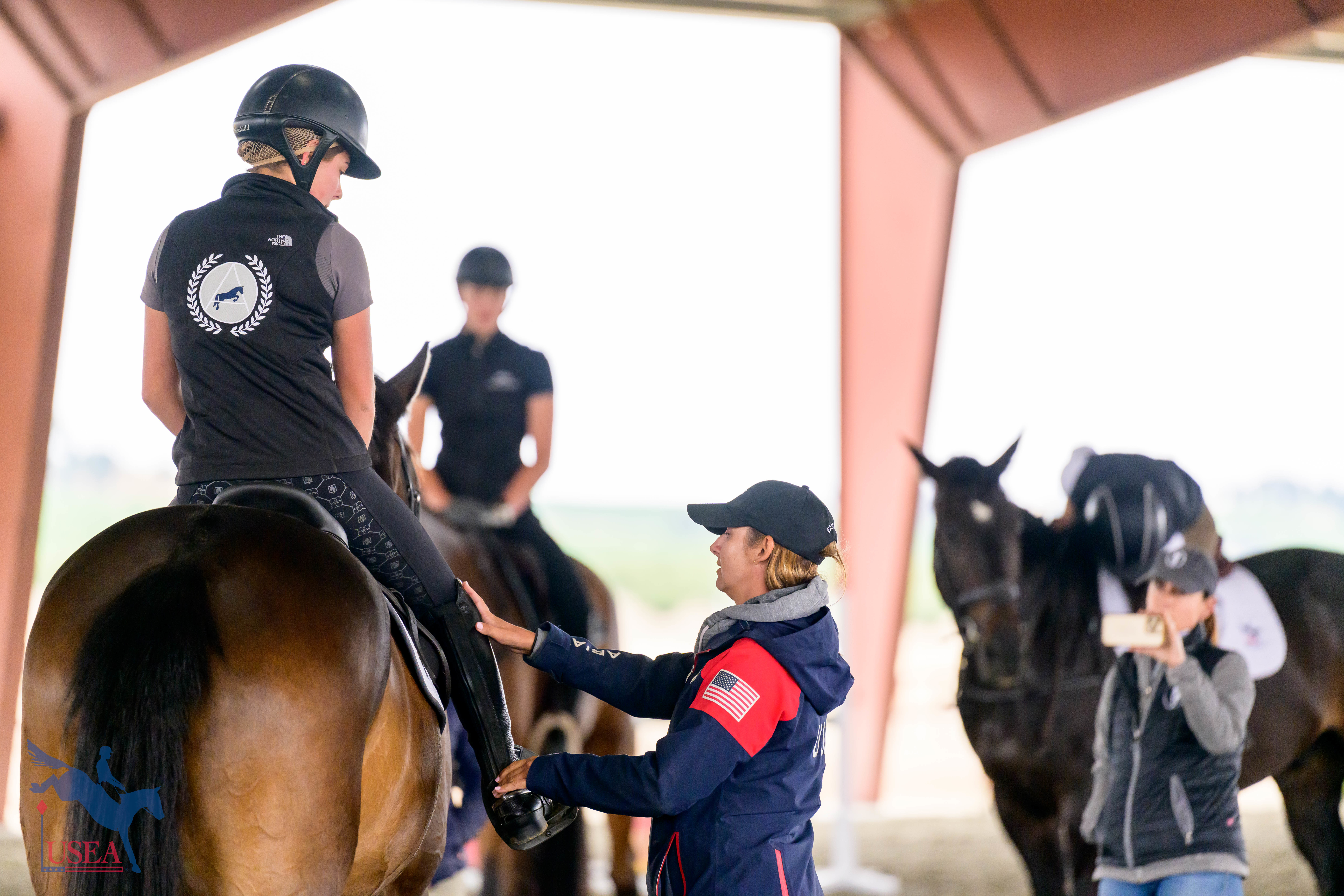
Brown quoted the late and great Jimmy Wofford often over the last two days and the morning’s wisdom from Wofford about jumping was, “a good rider lands and reorganizes quickly. A great rider lands in the right canter.” She added that in both jumping phases, preparation and organization—just like the previous day—came from thoughtful and specific riders, tailored to your horse’s need and manner of going.
Lofty goals were a key term that Brown used to describe long term, even lifelong goals, such as achieving a truly independent seat. “Being able to ride at pace and in balance is a lofty goal,” she added. Riders need to know the difference between galloping and preparation for a fence and how to ride each fence on the approach, the fence itself, and the gallop away while staying in a consistent and powerful rhythm.
Riding began after the lecture with a thorough study of the difference in position between dressage and jumping: the heel underneath the hip, stirrup on the ball of the foot with more weight towards the inside, and foot at a 45-degree angle to the horse’s body to allow a soft, open knee and soft thigh. A quick recap of the German riding scale and off riders went.
Square turns and consistency made a comeback in every ride as riders began on a figure-eight with square turns to a vertical and an oxer respectively. “Your canter should be the same all the way around,” Brown explained when one rider had a clear difference between her canter before fences and in the flat between. “It’s a testament to the importance of rhythm that even when they are behind the leg, they are able to jump cleanly.”
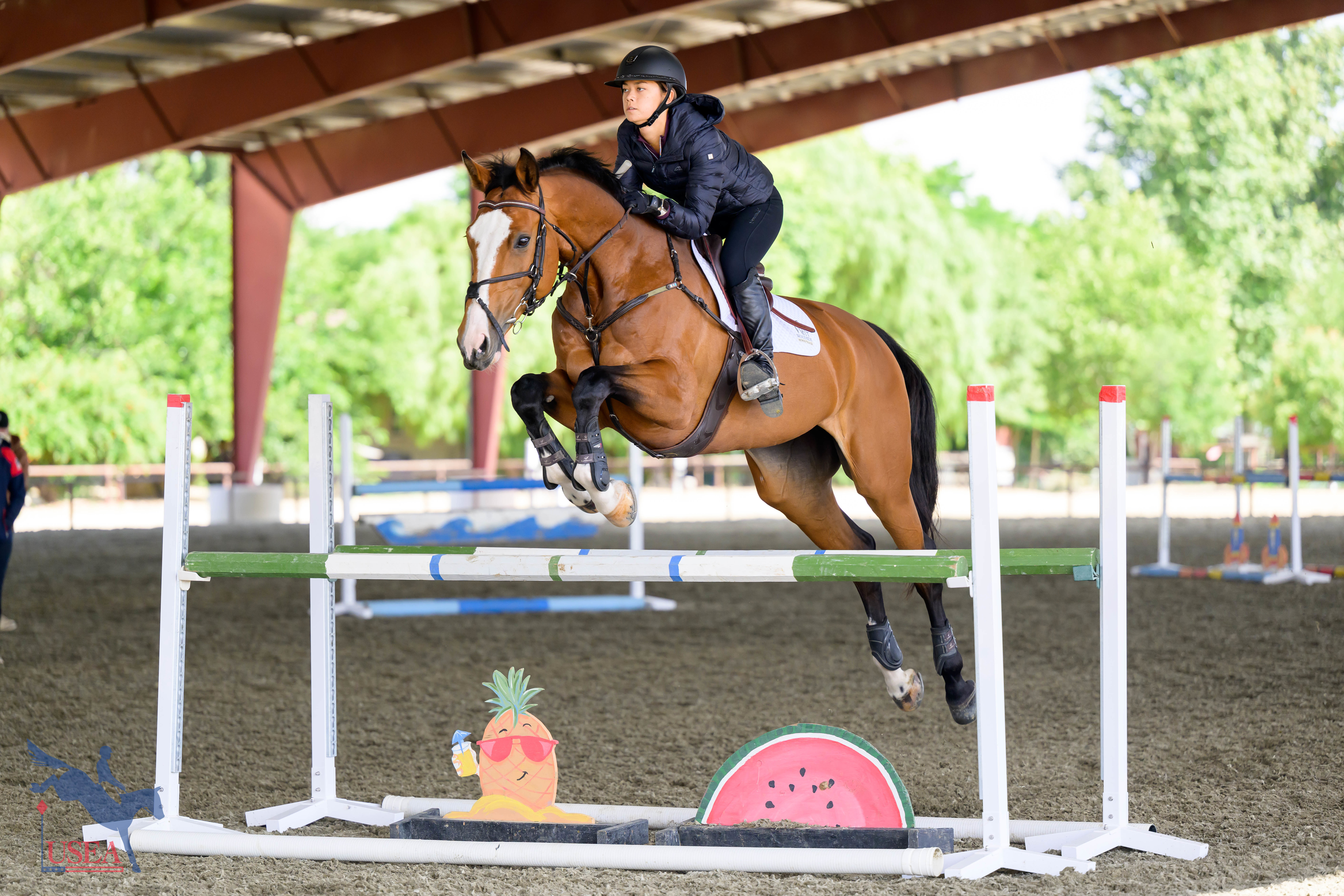
When riders made big corrections, each was asked to analyze their ride and discuss what was lacking in the core principles. While rhythm remained the most consistent issue, straightness and suppleness also had repeat appearances. “Any time you have to make a big correction, you probably missed out on the small correction earlier,” Brown commented. “So, keep doing your flatwork and make your correction a job.” To that effect, she had riders leg yield out of a triple combination in order to maintain straightness and engage the horses to create suppleness.
A few riders on hot or smaller horses had moments in which their distances were inconsistent. Brown encouraged a ride that maintained a 12’ step. “Making time is never about going faster at the fence,” she added. “It’s about being smooth and efficient in your set up and getting away quickly.”
Discipline in your mind to ride a thoughtful line and rhythmic canter brought up some sport psychology theory. “If you want to be good at this sport, you need to be committed enough to hold the discipline,” Brown said. As in the previous day where she asked riders to keep themselves from being lured into half circles on a freeform rectangle instead of corners, keeping the flatwork going between jumps and continuing to finesse the suppleness even as the jumps came up encouraged the discipline to continue.
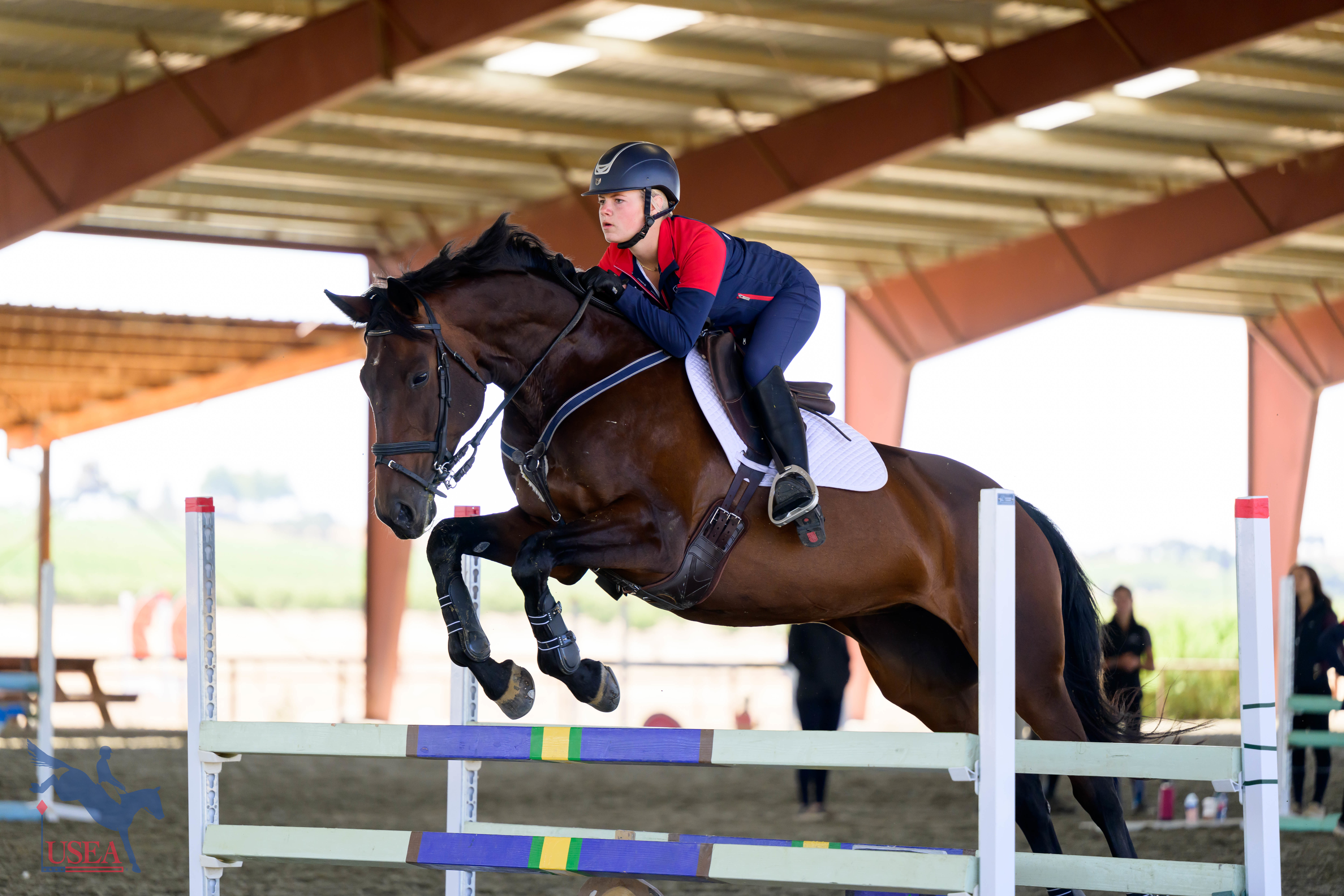
As the clinic came to a close, Brown took the opportunity to impart advice for future professional goals. “When you ride a lot of horses, be aware of your position and always ride your basics well,” she told Sarah Ross who was catch riding Teresa Harcourt’s Csonger and Kiera McKeon on a two-week old ride in Makemineadouble. “Do what is right for your horse and ride each one like an individual.”
Before concluding the final ride, Brown wanted to be sure riders knew where they stood. “I’m very impressed with the returning students, and you new faces have wonderful talent,” she said and encouraged riders to stick with the program and auditors to apply for future cycles. “My job doesn’t end here. I am happy to be a resource to you all.”
Don't forget to follow the USEA’s coverage on social media!
Facebook | Instagram | Twitter
About the USEA Emerging Athlete U21 Program (EA21)
The purpose of the USEA Emerging Athletes U21 Program (EA21) is to identify and provide consistent quality instruction to the next generation of elite event riders. The aim is to create a pipeline for potential team riders by identifying and developing young talent, improving horsemanship and riding skills, and training and improving skills and consistency.
The USEA Emerging Athletes U21 Program was launched in 2022 with a model of five summertime regional clinics taught by selected USEA Eventing Coaches Program (ECP) instructors, leading to a winter national camp consisting of selected Young Riders from the regional clinics. Athletes who are 21 years or younger, are current members of their USEA Young Rider Area program, and are established at the Training Level or higher, are eligible to apply for the EA21 program. Click here to learn more about the USEA EA21 Program.
The USEA would like to thank Kerrits, Ride iQ, Sidelines Magazine and WeRideTogether for sponsoring the USEA Emerging Athletes U21 Program.
